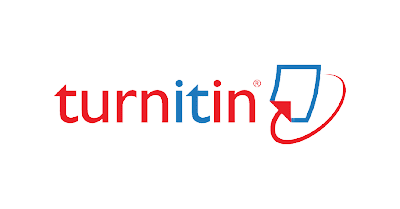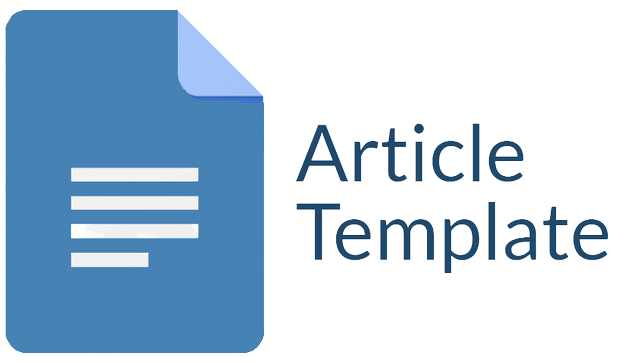PENGEMBANGAN APLIKASI TRIZ BIDANG MANAJEMEN DAN BISNIS UNTUK PEMBELAJARAN DENGAN METODE PROTOYPING
Abstract
TRIZ merupakan metode problem solving yang dikembangkan oleh Genrich Altshuller, adalah bentuk akronim dari bahasa Rusia “Teoria Resheniya Izobretatelskikh Zadach” yang dapat diartikan “Teori Penyelesaian Masalah Inventif”. TRIZ melibatkan serangkaian langkah atau algoritma yang dimulai dengan mengidentifikasi masalah tertentu dan konflik yang muncul. Konflik yang berhasil diselesaikan akan diubah menjadi solusi umum dan solusi khusus. TRIZ telah dieksplorasi untuk diterapkan pada bidang bisnis dan manajemen dengan menggunakan pendekatan manajemen sumber dayanya sendiri yang kemudian diterapkan pada bidang tersebut dengan tujuan mampu membantu pemecahan masalah dalam membangun strategi bisnis yang optimal. Sebelumnya sudah ada pengimplementasian TRIZ ke dalam sebuah aplikasi mobile berbasis android. Android merupakan sistem operasi perangkat mobile berbasis linux. Akan tetapi aplikasi ini masih memerlukan pengembangan khususnya dibagai tampilan antarmuka guna menarik perhatian pengguna untuk menggunakannya serta membantu pengguna dalam mempelajari dan memahami materi di dalamnya dengan lebih mudah. Dalam pengembangan aplikasi ini menggunakan metode protyping yang merupakan metode pengembangan yang memberikan gambaran pengembangan sistem sehingga para stakeholders memiliki gambaran pasti terhadap pengembangan yang dilakukan. Dalam pengujiannya didapatkan hasil bahwa pengembangan yang telah dilakukan berhasil untuk meningkatkan minat calon pengguna untuk mengoperasikan aplikasi ini serta lebih membantu mereka dalam mempelajari dan memahami materi yang diberikan.
Downloads
References
Alkasem, B., & Tilfarlioğlu, F. Y. (2022). TRIZ as Innovative Method in English Language Teaching. Journal of Education and Training Studies, 11(1), 37. https://doi.org/10.11114/jets.v11i1.5823
Anghel, I. I., Călin, R. Ștefana, Nedelea, M. L., Stănică, I. C., Tudose, C., & Boiangiu, C. A. (2022). Software Development Methodologies: a Comparative Analysis. UPB Scientific Bulletin, Series C: Electrical Engineering and Computer Science, 84(3), 45–58.
Chang, D., & Wu, W. (2021). Impact of the COVID-19 Pandemic on the Tourism Industry : Applying TRIZ and DEMATEL to Construct a Decision-Making Model.
Hapsari, E. D., & Yuda, Y. P. (2022). Efektivitas Penggunaan Media Pembelajaran Menulis Aksara Jawa Berbasis Mobile Terhadap Prestasi Siswa. EDUSAINTEK: Jurnal Pendidikan, Sains Dan Teknologi, 9(2), 351–361. https://doi.org/10.47668/edusaintek.v9i2.475
Hartono, M., Santoso, A., Tanugraha, M., Prayogo, D., & Kusumo, A. (2018). KANSEI ENGINEERING, KANO & TRIZ FOR LOGISTICS SERVICE EXCELLENCE. In Nucl. Phys. (Vol. 13, Issue 1).
Jeong, H., Lee, S., & Shin, K. (2021). Development of food packaging through triz and the possibility of open innovation. Journal of Open Innovation: Technology, Market, and Complexity, 7(4), 213. https://doi.org/10.3390/joitmc7040213
Kuswanto, J., & Radiansah, F. (2018). Media Pembelajaran Berbasis Android Pada Mata Pelajaran Sistem Operasi Jaringan Kelas XI. Jurnal Media Infotama, 14(1). https://doi.org/10.37676/jmi.v14i1.467
Nugraha, R. C. (2022a). Metode TRIZ Untuk Meningkatkan Kreativitas Dan Inovasi Pada Bidang Bisnis dan Manajemen Melalui Aplikasi Berbasis Mobile.
Nugraha, R. C. (2022b). Pengembangan Aplikasi Mobile TRIZ Pada Bidang Bisnis dan Manajemen Untuk Meningkatkan Kreativitas dan Inovasi.
Pressman, R. S. (2010). Software Engineering “A Practitioner’s Approach.” https://doi.org/10.1049/ic:20040411
Purnomo, H., & Widihandono, I. (2020). Desain Jaket Ergonomis Untuk Meningkatkan Kenyamanan Kerja Kurir Menggunakan Metode Triz Dan Antropometri. Jurnal Engine, 4. https://dspace.uii.ac.id/handle/123456789/28495
Susanti, Affrida, Z., & Fahyuni, E. F. (2017). Jenis Jenis Media Dalam Pembelajaran. Umsida, 1(1), 1–17.
Copyright (c) 2024 Alafta Wisantara Sidana, Kholid Haryono

This work is licensed under a Creative Commons Attribution-ShareAlike 4.0 International License.
Jurnal allows anyone to compose, correct, and do derivative works, even for commercial purposes, as long as they credit for the original work. This license is the freest. It is recommended for maximum distribution and use of licensed material.
The submitted paper is assumed not to contain any proprietary materials that are not protected by patent rights or patent applications; The responsibility for technical content and protection of proprietary materials rests with the authors and their organizations and not the responsibility of journal or its editorial staff. The primary (first/appropriate) author is responsible for ensuring that the article has been viewed and approved by all other authors. The author's responsibility is to obtain all necessary copyright waivers to use any copyrighted material in the manuscript before submission.
Jurnal Pendidikan, Sains dan Teknologi allows the author(s) to hold the copyright without restrictions and allow the author(s) to retain publishing rights without restrictions. Jurnal Pendidikan, Sains dan Teknologi CC-BY-SA or an equivalent license as the optimal license for the publication, distribution, use, and reuse of scholarly work. Jurnal Pendidikan, Sains dan Teknologi allows the author(s) to hold the copyright without restrictions and allow the author(s) to retain publishing rights without restrictions. Jurnal Pendidikan, Sains dan Teknologi CC-BY-SA or an equivalent license as the optimal license for the publication, distribution, use, and reuse of scholarly work.
In developing strategy and setting priorities Jurnal Pendidikan, Sains dan Teknologi recognize that free access is better than priced access, libre access is better than free access, and libre under CC-BY-SA or the equivalent is better than libre under more restrictive open licenses. We should achieve what we can when we can. We should not delay achieving free in order to achieve libre, and we should not stop with free when we can achieve libre.
Jurnal Pendidikan, Sains dan Teknologi is licensed under a Creative Commons Attribution-ShareAlike 4.0 International License.
You are free to:
- Share a copy and redistribute the material in any medium or format
- Adapt a remix, transform, and build upon the material for any purpose, even commercially.
- The licensor cannot revoke these freedoms as long as you follow the license terms.






